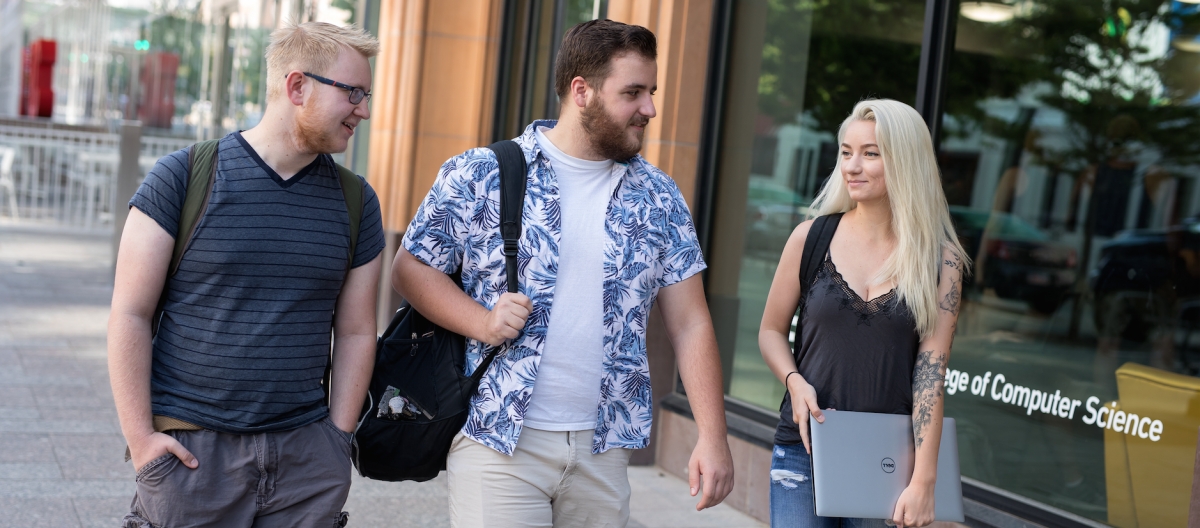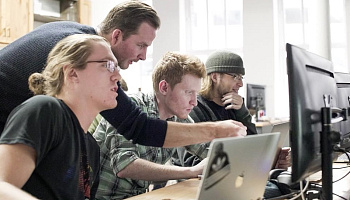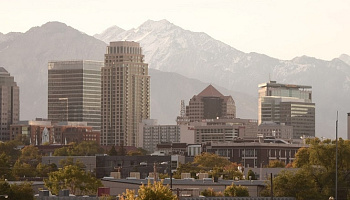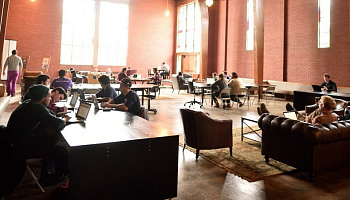The Dreammakers
SimpleCitizen (370 S. 300 East, simplecitizen.com) co-founder and CEO, Sam Stoddard, was at Brigham Young University studying to get his master’s in accounting degree when he met the woman who would become his wife. When they got married, he assumed her immigration process—she’s from South Korea—would be straightforward: he’d fill out some paperwork, she’d be granted citizenship, and that would be it. The experience, however, turned out to be anything but simple.
Stoddard began by enlisting the help of an attorney, who quoted him $3,000 to help secure his wife’s citizenship—obviously cost prohibitive for a student. So, with his background in tax accounting, Stoddard decided he could fill out the forms himself. Nearly four months later, after completing a stack of paperwork rivaling one of the last Harry Potter volumes, he went back to the attorney to make sure his wife’s application was ready for submittal. Five minutes after glancing over the documents, the attorney assured him he’d done the task correctly and handed him a bill for $500.
“Sam knew there had to be a better way,” says SimpleCitizen Vice President of Community, Matthew Gale. So, Stoddard created SimpleCitizen—a digital immigration solution designed to streamline the path to citizenship. He pitched the idea at various BYU tech competitions and others across the state, won some grant money, and eventually built the software. Soon after he partnered with company co-founder, CTO and Mexican immigrant, Aydé Soto, a 2018 Women in Tech Finalist by the Women Technology Council and recipient of the 2018 Sego Award for Innovation in Technology.
From their beginnings in Utah County, the team—which in addition to Stoddard and Soto includes third co-founder and CMO, Brady Stoddard—took their talents and technology to BoomStartup, where they raised money from Kickstart Seed Fund and several other investors, ultimately making the pilgrimage to Silicon Valley for three months in 2016 to join Y Combinator, the startup accelerator of Airbnb, Dropbox and Reddit fame, just to name a few.
Gale describes SimpleCitizen as the TurboTax for immigration. “We started three years ago,” he says, “and since then we’ve helped thousands of immigrants in the United States.” In November 2017, SimpleCitizen launched an enterprise product for companies that employs foreigners to automate their immigration paperwork. Between that, word-of-mouth referrals, and Google reviews, SimpleCitizen is disrupting the immigration process in an incredibly positive way.
Launched in Utah County, SimpleCitizen eventually moved to Salt Lake’s Impact Hub and is now located at Church & State, a non-profit business incubator. “We plan to stay in Salt Lake,” Gale says. “We’re innovating immigration and hope to help as many immigrants as possible. We’re on a mission to help people achieve the American dream.”
The Space Between Giving and Receiving
Within a small Main Street workspace, five earnest 20-somethings sit huddled together, their eyes fixed on the glowing screens in front of them. Their task? Coding and collaborating their way to STEM Mentor Exchange, or STEM MX, a web-based platform which will allow K-12 teachers to provide STEM opportunities to students by connecting them with professionals in the field. And while the scene may not seem that out of the ordinary in tech-friendly downtown Salt Lake, the coders building the platform are a bit unexpected: they are students themselves, earning degrees while getting real-world experience at the Neumont College of Computer Science (143 Main St, neumont.edu). “We’re changing lives through education,” says Neumont President Aaron Reed, Ed.D. from his office on the fourth floor of the school’s campus, the Ezra Thompson Building at 143 South Main Street, colloquially known as the old Tribune building. “We love being downtown,” Reed says. “It’s a major recruiting-plus for us and certainly sweetens the pot for students coming here from all over the country.” 
Approximately 100 students graduate from Neumont every year in degree programs spanning information systems, game development, web design and technology management. As Reed mentioned, more than 80 percent of the student body comes from out of state, and most live in school-sponsored housing downtown, lending their passion to the city’s burgeoning tech scene while getting to take advantage of all that downtown Salt Lake has to offer.
But it’s not only students that Neumont’s staff and faculty hope to impact. “Looking at the numbers, and where things are going on a local, regional and national level, we need more people who code,” Reed says. “The projections at every level show that there are simply not enough computer science or STEM graduates to support the needs of the workplace.”
Which is why students at Neumont get to work on mutually-beneficial projects for businesses and non-profits here and across the country. STEM MX is the result of a collaboration between the college’s Enterprise Partner program and the STEM Partners Foundation, an organization tied to the State of Utah’s STEM Action Center. “When you’re as passionate about computer science education as we are,” Reed says, “you jump on the chance to effect change at every level.”
Solving Problems Yet to Be Realized
“We believe virtual reality is going to disrupt the way we all work, socialize, and entertain ourselves over the next decade in ways that are hard for many people to imagine right now,” says Matt Wilburn, chief operating officer for Daz Productions, Inc. (224 S. 200 West, daz3D.com) a downtown tech firm redefining the tech space through a passion for Virtual Reality (VR) and Augmented Reality (AR).
For the uninitiated, VR immerses users in a fully artificial virtual environment, typically with the use of a VR headset—a technology being used widely in video games and movies. AR, on the other hand, overlays virtual objects onto the real-world environment; an example is the Pokémon Go! craze that swept the world in July 2016. Daz Productions works in both of these realms through two company divisions: Daz 3D and Morph 3D.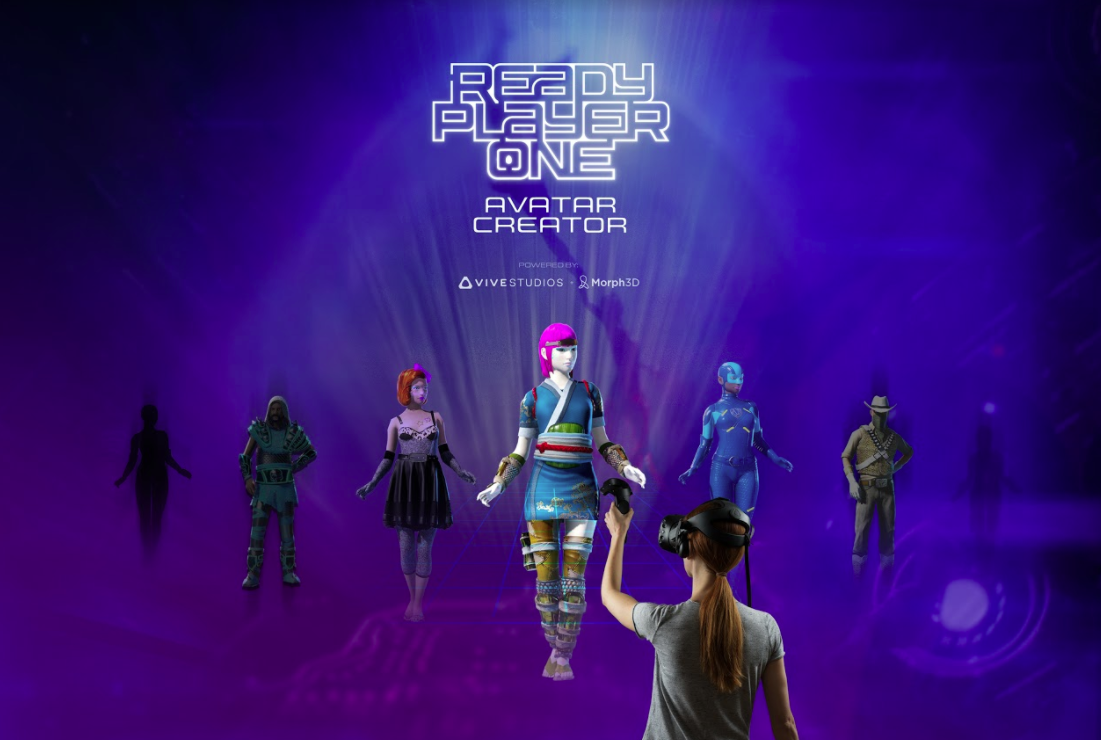
General Manager Berkley Frei explains the work being done at Morph 3D as “solving the problem for everyday people that don’t yet know of the problem that needs to be solved.” Right now, Morph 3D’s state-of-the-art avatar engine is used primarily by developers to create video games, apps, and VR and AR experiences. But as these virtual and augmented worlds expand to the masses, this same avatar engine can be used by consumers. “In our ‘real lives’ we make choices every day about how to present ourselves,” Wilburn says. “It’s no different in virtual worlds: the more you experience VR, the more you’ll want to tailor your appearance and the way you interact with others.” Much like how Blogger and WordPress enabled non-developers to create their own websites, Morph 3D’s avatar engine makes it possible for the average Jane Doe to customize her own avatar for VR.
But, as James Thornton, Daz Productions’ chairman, president and CEO explained, the pathway to getting this technology into the hands of the masses is by forging more business-to-business partnerships; collaborations like Daz Productions, Inc’s recent partnership with Taiwanese consumer electronics company HTC and entertainment giant Warner Bros. to support Steven Spielberg’s blockbuster production of Ernest Cline’s novel, Ready Player One. “We’re providing this technology for multiple platforms, which then gives us access to a much broader audience,” Thornton says.
The Daz 3D side of the business serves professional and recreational artists in more than 200 countries across the globe and has a worldwide customer base totaling tens of thousands.
Daz Productions, Inc. relocated from Draper to downtown Salt Lake City in 2012, a move that Wilburn says has been key in accessing and attracting top creative and software development talent. “We’re waiting for the masses to catch on to the problems we’re solving,” Thornton adds. ”But when they do—and they’re starting to—we’ll access millions of users across the globe, from right here in downtown Salt Lake.”

